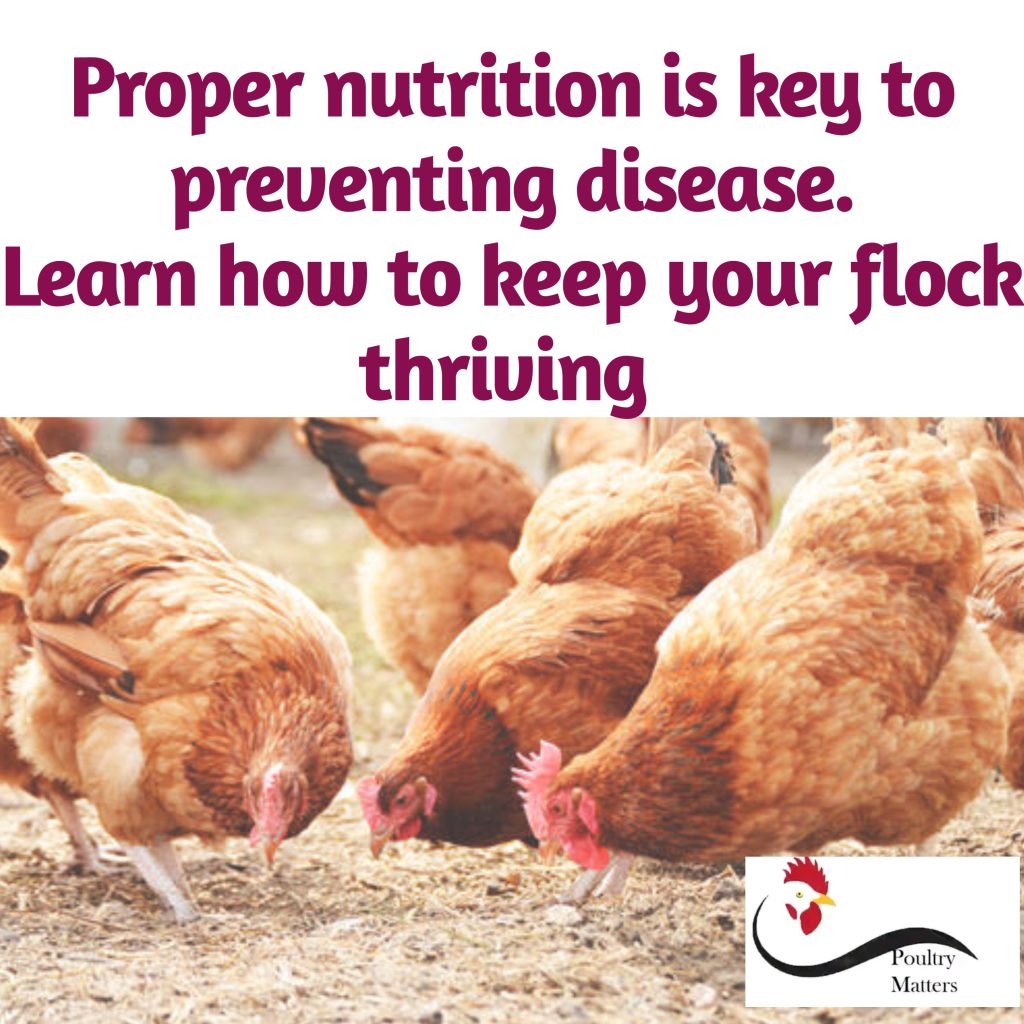Poultry nutritional deficiency
As previously discussed, sickness in poultry flocks can be caused by a variety of pathogens, including viruses, bacteria, fungi, and parasites. However, not all poultry ailments are linked to infections — some are directly related to nutritional imbalances in the birds’ feeding regimen.
While we’ve already explored the different types of harmful organisms that can cause diseases in poultry, this section will focus on diseases resulting from nutritional deficiencies in the birds’ diet. These types of ailments arise when birds do not receive the right balance of essential nutrients such as proteins, vitamins, minerals, and energy sources at the appropriate stages of growth and production.
Poultry nutritional diseases occurs when the birds do not receive the right nutritional balance of essential nutrients in their feed. The deficiency of these nutrients like protein, mineral and vitamins can have serious consequences on the overall health and well-being of the flock. Deficiencies can weaken the birds’ immune systems, impair growth, reduce egg production, and in severe cases, lead to deformities or death. Ultimately, this negatively impacts the productivity and profitability of the poultry operations.
Understanding the causes, symptoms, and prevention of these nutritional diseases is crucial for any poultry farmer aiming to achieve optimal flock performance and farm sustainability.

Read more – https://poultrygist.com.ng/2024/11/poultry-parasitic-diseases/
Examples of common poultry nutritional diseases –
| SN | Disease | Cause | Symptoms | Control |
| 1 | Ricket | 1. Deficiency in Calcium, Phosphorus or Vitamin D3 | 1. Weak bones 2. Lameness 3. Beak deformity | 1. Give adequate Calcium, Phosphorus or Vitamin D3 in the feed of the birds |
| 2 | Perosis (Also referred to as slipped tendon ) | 1. Deficiency in Manganese, Choline or Biotin | 1. Swollen hocks 2. Twisted legs 3. Tendon displacement | 1. Include adequate trace minerals and vitamin in flock’s diet |
| 3 | Curled Toe Paralysis | 1. Deficiency in Vitamin B2 | 1. Inward or downward curling of the toe 2. Weak legs giving the bird difficulty to stand or move | 1. Serve birds with balanced diet |
| 4 | Exudative Diathesis | 1. Deficiency in Vitamin E | 1. Swelling under the skin of the bird particularly around the breast and belly areas | 1. Diet to be rich in Vitamin E and Selenium to ensure balanced antioxidant support |
Conclusion –
Feeding your flock goes beyond simply filling the feed tray—it involves providing a nutrient-rich, balanced diet that aligns with the specific nutritional needs of the birds at each stage of growth and production. Poultry nutritional diseases are largely preventable when farmers pay close attention to both the quality of the feed and the age-specific dietary requirements of their birds.
A well-balanced diet not only promotes strong immunity and overall good health in the flock but also enhances feed conversion efficiency, leading to better growth rates and higher egg or meat production. When birds are healthy, productive, and efficiently utilizing their feed, the farm experiences lower mortality, reduced waste, and improved returns on investment. Ultimately, maintaining a proper feeding regimen is fundamental to achieving long-term profitability, operational efficiency, and sustainability in poultry farming—the core pillars of a successful poultry business
You have us, we are here to support you with all that you need to make your farm profitable and sustainable.

Read more https://poultrygist.com.ng/2024/11/poultry-parasitic-diseases/
Cheers
